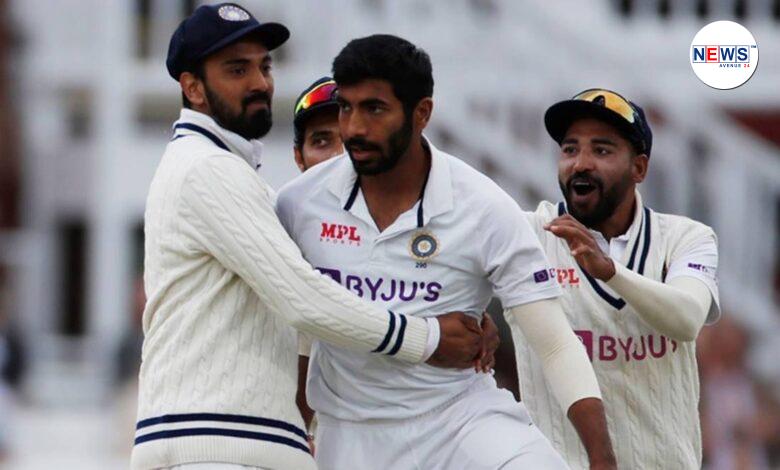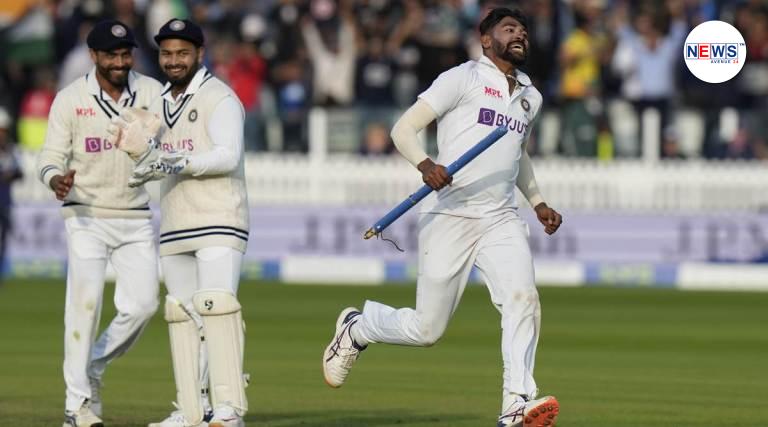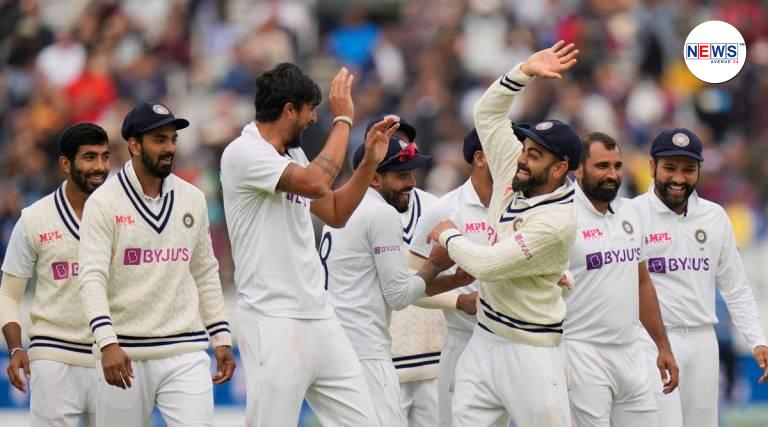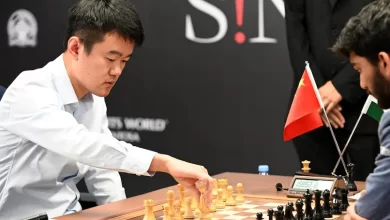
Four-pronged attack brings different qualities to the table, creating an irresistible concoction that blew England away.
Ten English wickets to take in less than two sessions. A fifth-day pitch with critics sighing about the absence of Ravichandran Ashwin. The match situation where a draw would have been easily seen as an honourable result at the start of the day.
All these factors could have prompted the Indian pacers to be relaxed. No one would have cussed them. Instead, they wowed with their talent, intimidated with their presence without resorting to too many bouncers, and showcased their creativity to break through any English resistance.
Jasprit Bumrah dug deep to produce a vicious leg-cutter to remove the seemingly impregnable Joe Root, Ishant Sharma nailed a perfect nip-backer to take out the in-form Jonny Bairstow, Mohammed Shami curled out opener Dom Sibley with a ball that would have tested Geoffrey Boycott, and Mohammed Siraj crafted a straightener that leapt to knock down the resolute Jos Buttler.
They didn’t just do the regular things extraordinarily well, but were also very creative. When it seemed Ollie Robinson wouldn’t budge, Bumrah produced one of the great slower balls in the dying make-or-break minutes of the Test match. When Mooen Ali kept pushing his bat inside the line to his away-curlers, Siraj forced his hands by getting a full ball to slant away from the line of the stumps.
This abundance of riches – a four-pronged pace attack – is a far cry from the early and mid-1970s, the worst of times for Indian fast bowling when Abid Ali used to share the new ball with Eknath Solkar, or occasionally, a certain Sunil Gavaskar. The current Indian fast bowling cartel is a four-pronged attack bullying and battering opposition batsmen, apart from taking 39 England wickets in the first two Tests. On a fifth-day Lord’s pitch which, on the face of it, demanded Ashwin’s guile, the four Indian fast bowlers cleaned up the hosts in 51.5 overs to win the Test.

Bumrah and Shami were the expected threats for Joe Root and company. But Siraj and Ishant, too, raised their game to the level of seriously impacting the outcome of the Test. Ishant’s double blow to remove Moeen Ali and Sam Curran in the first innings brought his team back into the contest. Siraj’s dismissals of the two batsmen off successive balls during England’s second innings took India closer to victory. Ishant carried rustiness and the pressure of being picked over Ashwin for the game, but he came through with flying colours, with a match haul of 5/82. Siraj played at Lord’s for the first time, returning with a match haul of 8/126. The batting heroics of Shami and Bumrah took India to a winning position. Team effort secured the victory.
Brave call proved right
The Lord’s pitch had grass, but much shorter in length than what was on offer at Trent Bridge. The surface gradually became very good for batting. Understandably, leaving out Ashwin had raised many an eyebrow. Kohli, though, stuck to his four-pacers template, using them as attacking options. His decision was spectacularly vindicated. The much talked-about Lord’s slope played a part in the decision-making.
Both Ishant and Siraj are essentially incoming bowlers who don’t have very potent outswingers. However, they can make the ball hold its line and their ability to use the seam made them very effective, bowling both up and down the slope.

Lord’s has an east-west slope, eight feet from the top to the bottom, running downhill from the left of the pavilion diagonally across the pitch to the media box at the Nursery End. Usually, bowlers with a natural inswinger prefer to bowl with the slope. When they bowl up the hill, their stock deliveries sometimes straighten. Siraj’s strength is making the ball jag back off the surface. He intelligently used the slope to dismiss Sibley in the first innings.
A plan was laid out with two close-in fielders on the leg-side. Siraj bowled a length ball on Sibley’s pads, which seamed off the surface. The England opener was caught by the slope quagmire. He played early and the leading edge went to KL Rahul at short mid-wicket.
Siraj is fast becoming important for India because of his wicket-taking ability. In Australia last winter, he was the team’s highest wicket-taker, leading a weakened pace attack.

The 27-year-old has given the Indian seam attack a new dimension. This pace battery is a complete package – Bumrah’s all-round skill, Shami’s swing and deceptive bouncer, Ishant’s movement and bounce, and Siraj’s seam and ability to bowl long spells. Three of them can go past 140kph. Also, it was astounding the way Siraj successfully negotiated the slope in his first Test at Lord’s. Former India medium pacer Manoj Prabhakar was impressed.
“He clean-bowled one (Haseeb Hameed) with a cross-seamer. It skidded off the surface rather than seaming in down the hill. The batsman played inside the line and was bowled. You need to bowl the right length (good length) to take full advantage of the slope, which Siraj did. Also, when he bowls in-swing, his arm is straight, which is important for a bowler at Lord’s.
Veteran comes to party
As for Ishant, Buttler’s wicket in the first innings triggered a revival. An inswinger went through the gate, as Buttler tried to play an expansive drive. Once again, the slope played its part. Ishant was a horses-for-courses selection at Lord’s. Seven years ago, his career-best 7/74 had won India a Test at this venue. At his happy hunting ground, Ishant was back in his element.
“Your arm needs to be straight and high to make full use of the slope. When Ishant bowls inswingers, he bowls them with a high-arm action, a reason why he is successful at Lord’s,” Prabhakar observed.

Dilip Vengsarkar, the ‘Lord of Lord’s’ with three centuries at the venue, agreed that the slope can confuse batsmen. “See, in England the ball moves. It’s not that the ball is coming down the slope or moving away up the hill. The ball is moving in the air as well and you have to negotiate that. The right approach is to not have the slope factor at the back of your mind, play the ball on merit and play late, like Rohit Sharma does. I’m very happy with the way India bowled. About Siraj, he always bowls to take wickets. Ishant used all his experience,” the former India captain told this paper.
Playing open-chested became England batsmen’s biggest problem, Root excluded. For example, Sibley got out to a Shami outswinger in the second innings, getting square-on in his stance while going for a defensive prod. “Cricket is a sideways-on game when you bat and when you bowl. It has not changed for 200 years,” Geoffrey Boycott wrote in his Telegraph (London) column.
News Source: Indian Express





